Paddock Arcade, First Glass-Covered Street In The United States
Long before it was home to the Paddock Arcade, the lot on which the first “glass-covered street” in the United States has stood for 172 years was the place where Hart Massey built his first house in 1801. The name Paddock Arcade was simply derived from the streets in which it connects, Paddock and Arcade Streets, while the building itself was originally named for John Paddock, the early Watertown pioneer and older brother of Loveland Paddock, who erected it shortly after the great fire of 1849.
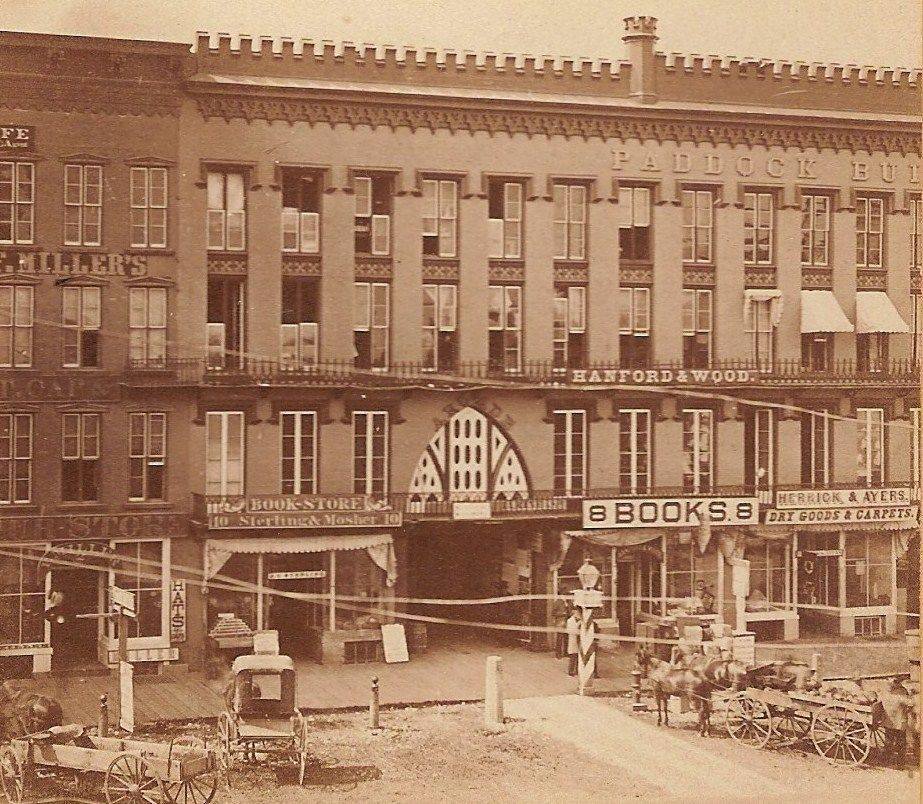
Designed by Otis Wheelock, who did many of the post-fire buildings in Watertown, Loveland wanted the Paddock Arcade to be modeled after those in France during that era. When the Paddock Arcade was near completion in 1850, the New York Reformer gave a rundown of the building and the many businesses that had signed up as tenants in their November 14th edition, shown in its entirety below.
This splendid building erected during the summer, is now nearly completed, and is rapidly being filled with occupants. The building is 132, by 94 feet, and three stories high on the inside, besides the glass arch which lights the whole interior. It is finished in the most beautiful style of plain and ornamental architecture. When occupied it will be a small city in itself, of stores, offices, saloons, etc.
On the first floor therewill be 10 stores, the Post Office and a saloon. On the right as you enter, the first will be occupied by Lynde & Munnsell’s Silk & Dry Goods Store; the second by James Weston’s Barber Shop, he who has burnt out a few weeks since, and is sure to retrieve his fortunes in his new location. The third and fourth stores are not yet taken: the fifth will be occupied by Pierce’s well known Periodical Depot. The sixth by the Post Office.
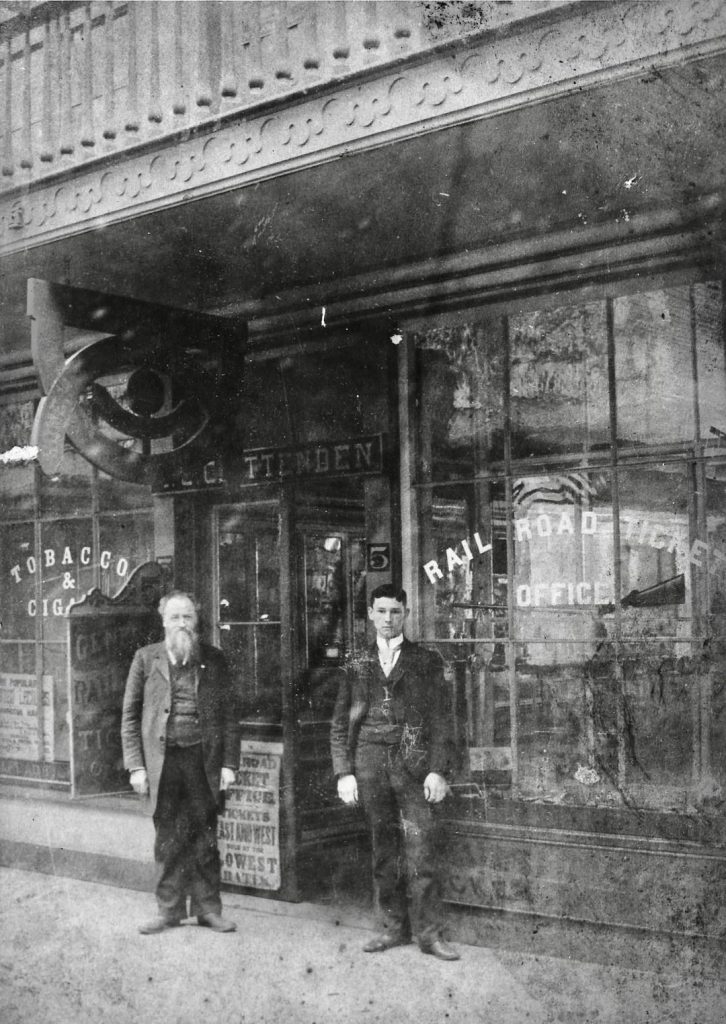
On the left as you enter the first will be occupied by Elmer’s Book-Store; the second by Ragg’s Confectionary and Fancy Store; the third by J. L. Rowlson, Merchant Tailor; the fourth by H. Sigman’s Hat, Cap and Fur Store; the fifth by Mrs. Peck’s Millinery and Fancy Silk Store; the sixth by George Ludlow’s Saloon.
On the second floor, the first two on the right by Wells & Robinson, Dentist; the third and fourth by Roberts’ Portrait Gallery; the Fifth and sixth by C. P. Westcott’s Daguerrean Gallery.
On the left on the second floor the first is not yet taken; the second is occupied by Ragg’s Ladies and Gent’s Ice Cream Saloon; the third by T. C. Chittenden & Son’s Law Office; the fourth by the Telegraph Office; the fifth by Mrs. Peck, and the sixth by George Ludlow. The third story will be wholly occupied as lodging rooms for clerks, etc.

The Arcade is ultimately to be lighted by Gas in the evening, and always by the Sun in the day-time! We are credibly informed that this building is the very first of the kind in point of spaciousness, elegance of finish, and convenience in the State. And one thing, we believe that it will yield its enterprising proprietor, Loveland Paddock, Esq., a handsome profit on his great outlay.
But all who come to visit the modern Bazar should not forget that the most magnificent view of the whole structure is to be had from the door of the New-York-Reformer Printing Rooms, where we invite all to make our acquaintance, and subscribe for the cheap family paper.
The estimated cost of the Arcade is $15,000. In the entrance to the Arcade a flight of stairs lead to the Law Office of Judge Hubbard and Jas. R. A. Perkins, on the left, and the Music Room of Geo. D. Mann, on the right. Another flight gained, and the admiring multitude are at our very door, and the direct entrance to our spacious office and News Room.
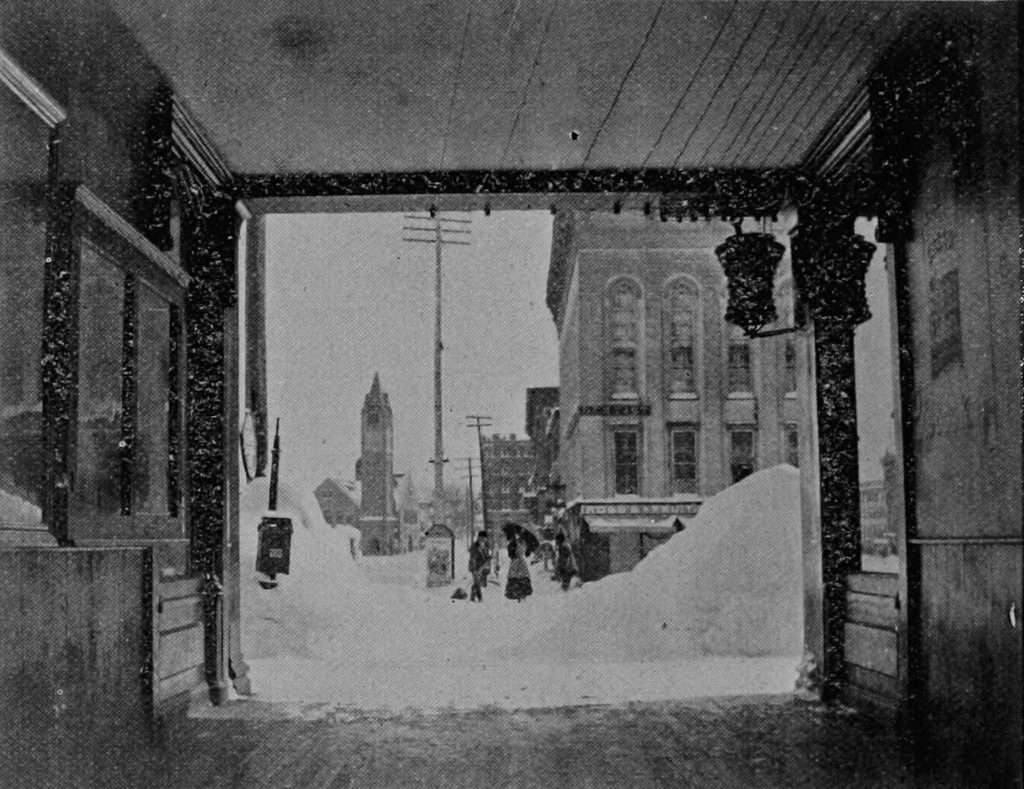
In 1916, the Paddock Building itself became a bit smaller on account of the new Woolworth Building to be constructed. Part of the Paddock Building was removed for its construction and then in the 1920s, the Arcade itself would receive its first big make-over when its Gothic-inspired arched window over the entrance was removed and given a more modern façade and a steel and glass drop-ceiling was added above the third floor.
In an article dated October 31, 1950, commemorating the centennial of the Paddock Arcade, it was noted through its first century, it was home to drug stores, cafes, shoe shining parlors, ice cream and confectionary stores, food markets, barber shops, music stores, book stores, photography studios/gallery, women’s shops, tobacco shops, ticket-stations, and telegram office. For its first 42 years, the Paddock Arcade was also home to the Post Office before the first Federal Post Office was built on Arsenal Street in 1892 (ironically, later moved, stone by stone, to Arcade Street and renamed the Cleveland Building.)
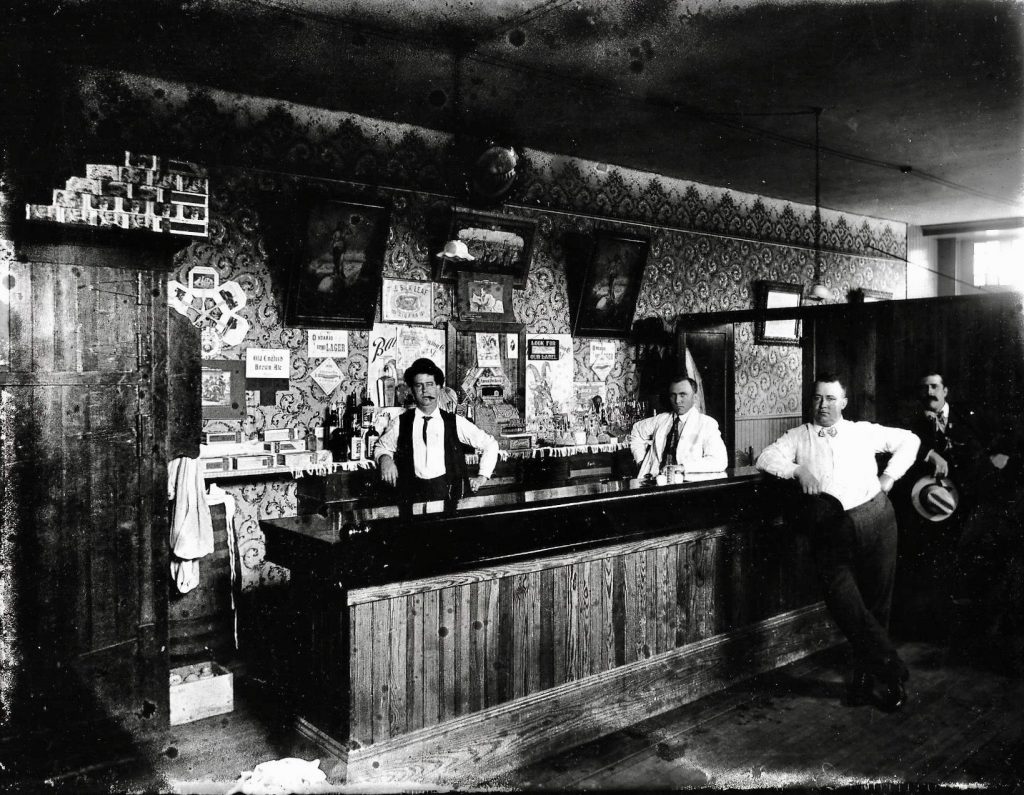
The Papayanakos family got their start by opening a confectionary and ice cream parlor in the Paddock Arcade around 1901, the Times reporter of the article stated it was the first time he had tasted an ice cream sundae. The Papayanakos brothers, James and Alec, who joined their relatives in the business, would go on to own and operate several movie theaters in the city, including the Antique and Olympic Theater.
About the time the Papayanakos family first peddled ice cream there in 1900, Colonel Theodore Roosevelt, the Republican candidate for vice president with William McKinley running for re-election, gave a speech in front of the Paddock Arcade to a large crowd estimated to be 10,000 strong on October 25. McKinley, only six months into his second term, was assassinated at the 1901 Pan-American Exposition in Buffalo, leading to Roosevelt becoming the 26th President of the United States.
Having visited Watertown two years prior when campaigning for governor, Roosevelt said in all the places he had visited, he had never had a larger audience or more enthusiastic reception in proportion to the size of the city than in Watertown – where he very well may have topped himself. McKinley was assassinated at the Pan-American Exposition in Buffalo, NY, in 1901, and Teddy Roosevelt assumed the role of President as a result.
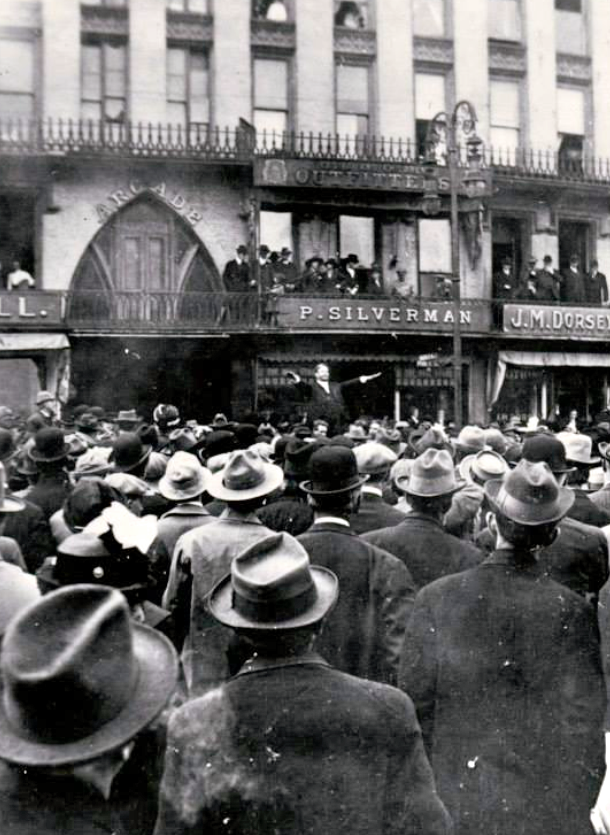
In 1942, one of the longest-tenured stores, the KarmelKorn Shoppe, came to Watertown. The national franchise was created in 1929 and according to the Watertown Daily Times, the store would find its permanent location in 1946 in the Paddock Arcade. A year later, Charlie Close purchased the store from Earl T. Conklin after spending a year working there and learning the trade. Over the years, the KarmelKorn Shoppe became a treat for generations with fond memories of the aroma once stepping inside the Paddock Arcade.
On June 15, 1976, the Paddock Arcade was added to the National Register of Historic Places. In 2008, it became the country’s oldest, continuously operating covered shopping mall and is considered the second oldest covered shopping mall in the United States. Most recently, the arcade has received funding from the Downtown Revitalization Initiative, which went to improvements. The building was sold in 2022 to local developer Jake Johnson who plans to complete some work on their exteriors and common areas.

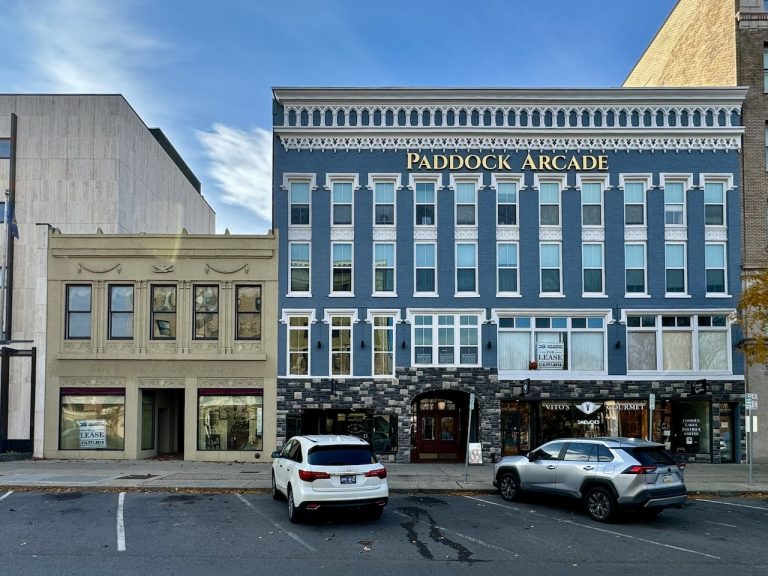
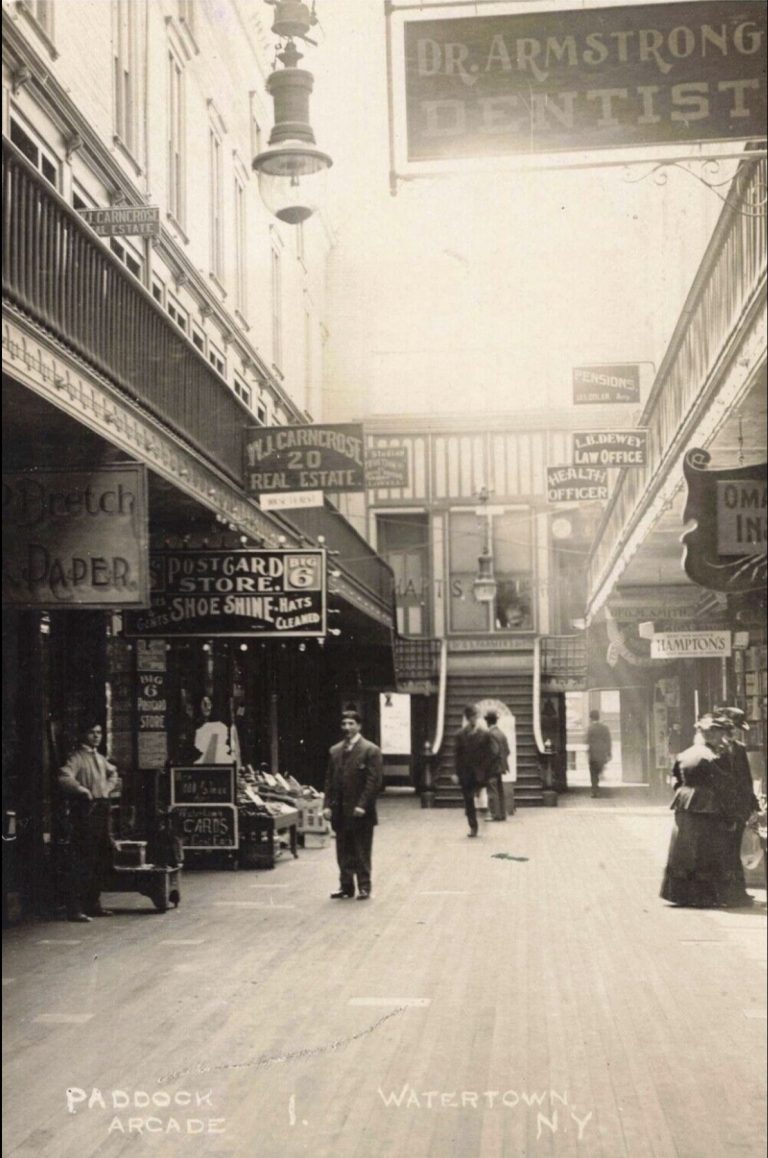
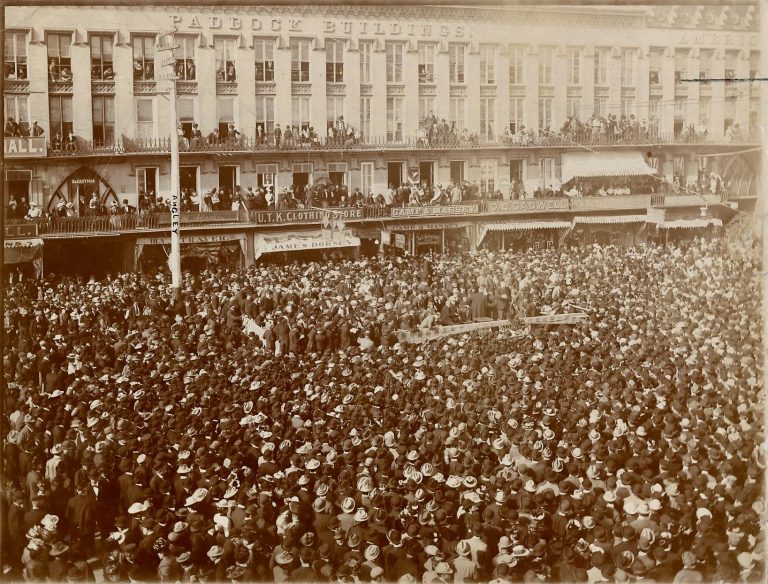
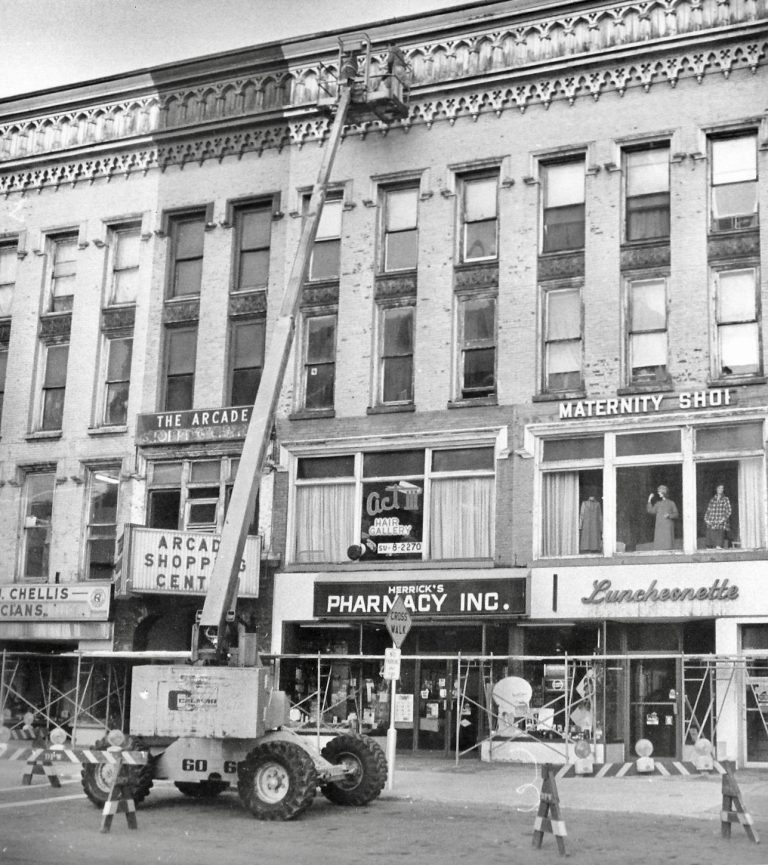
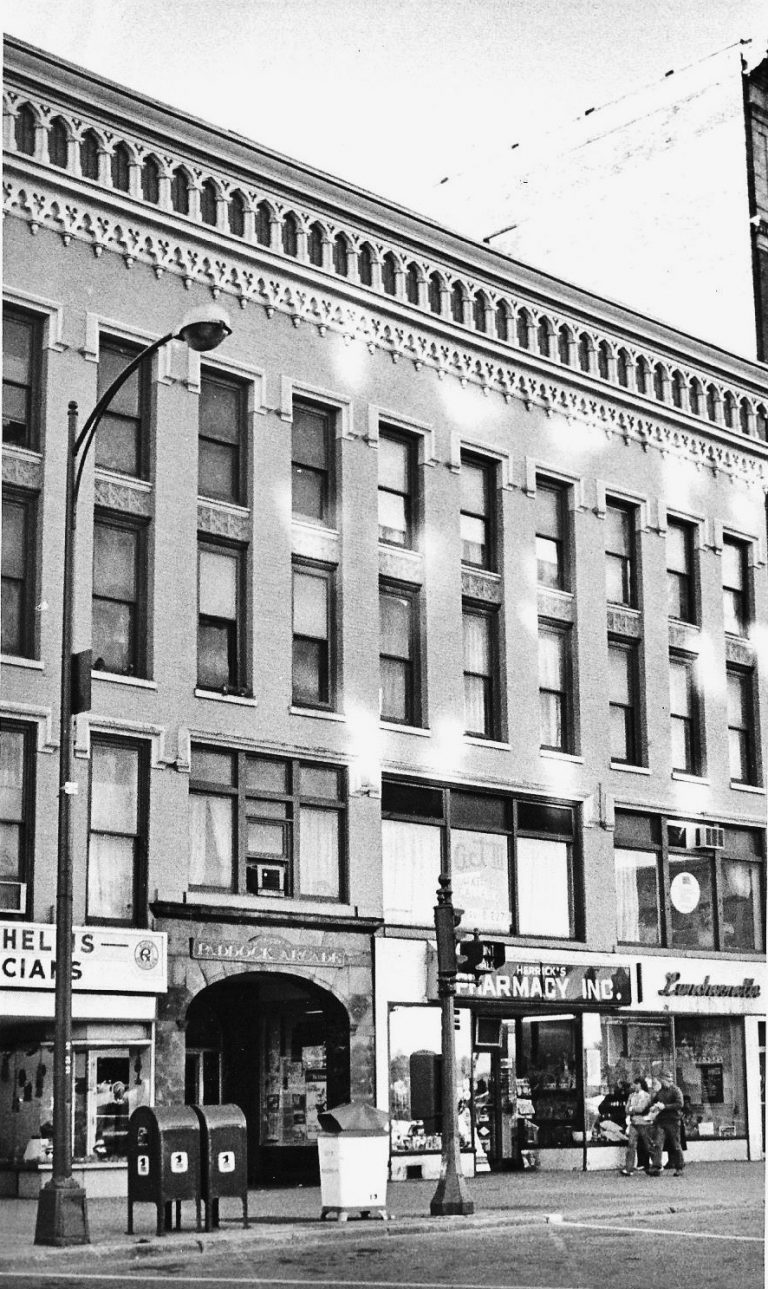
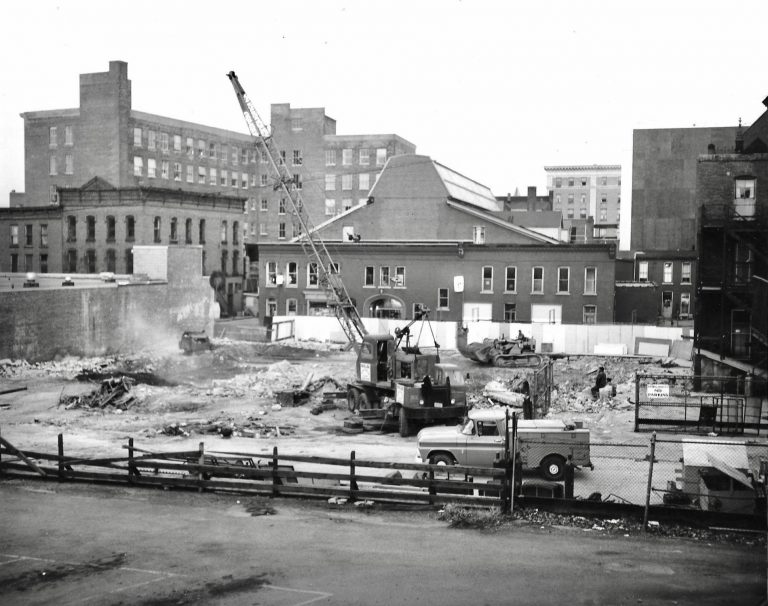
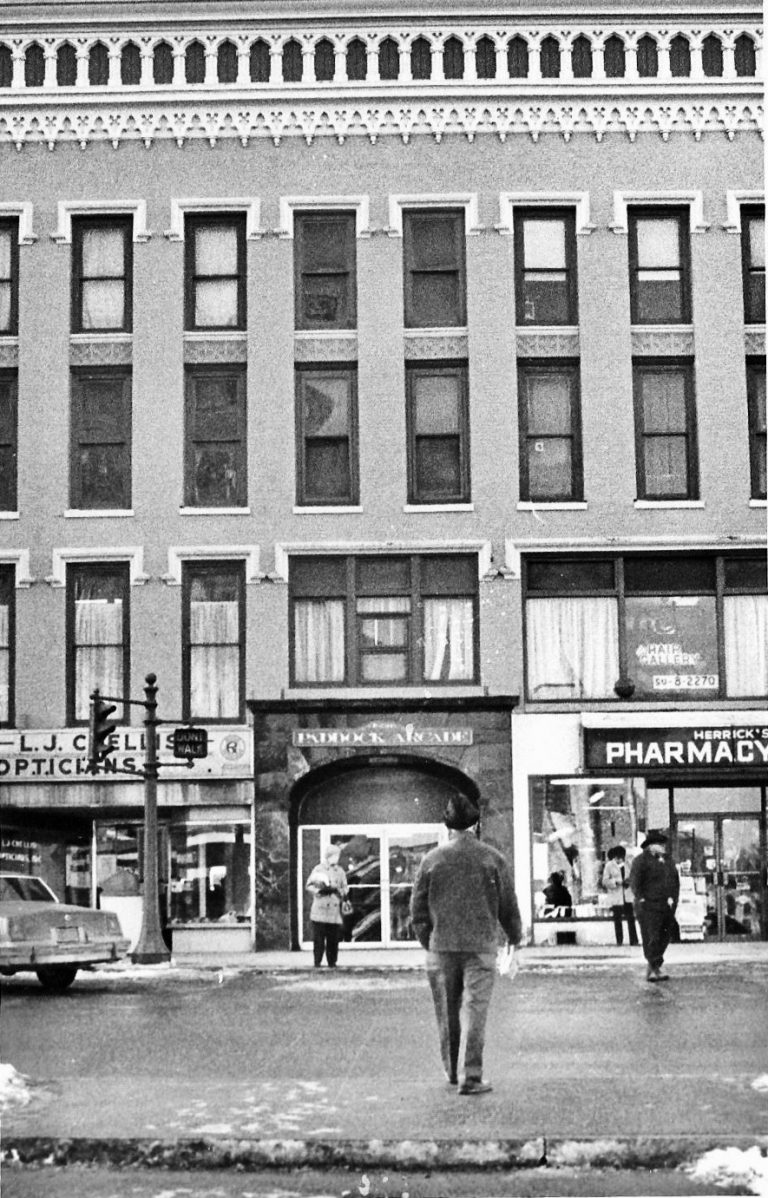
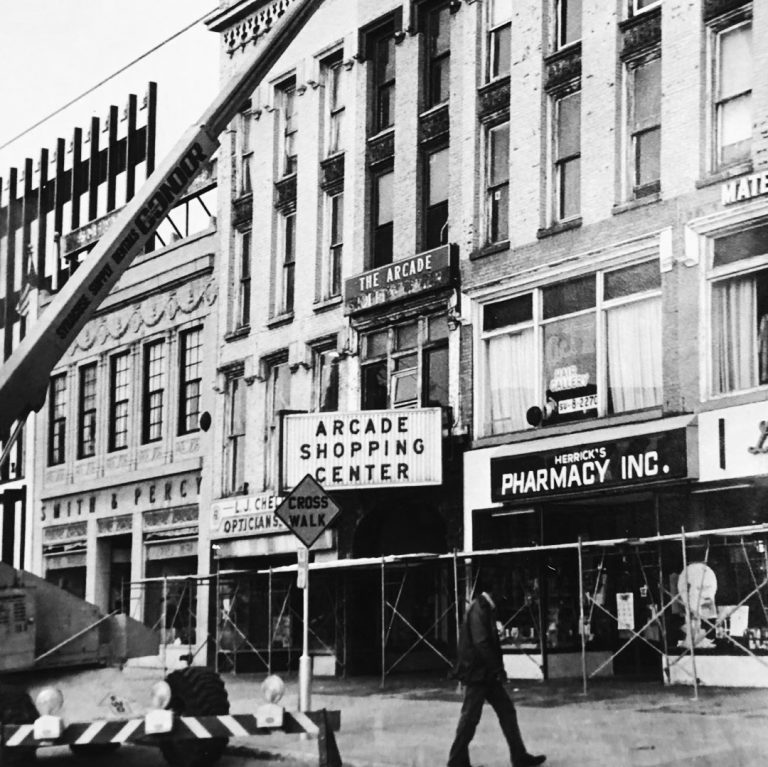
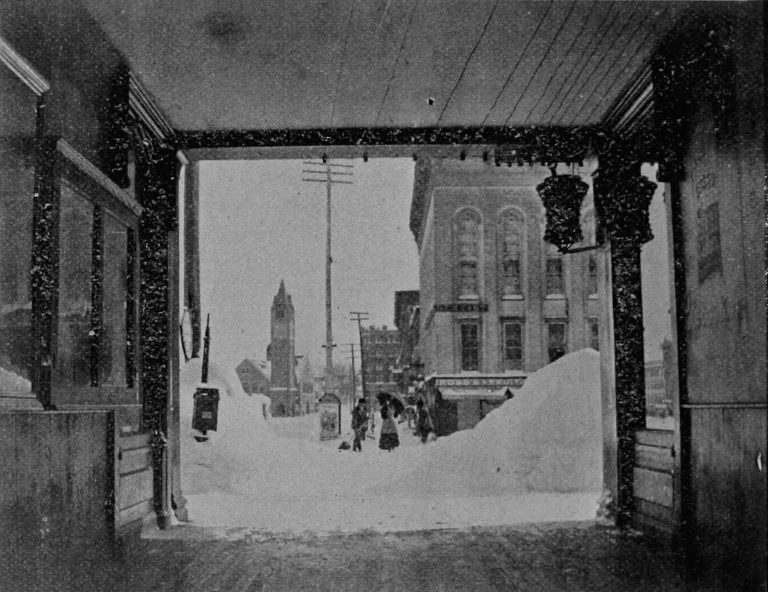
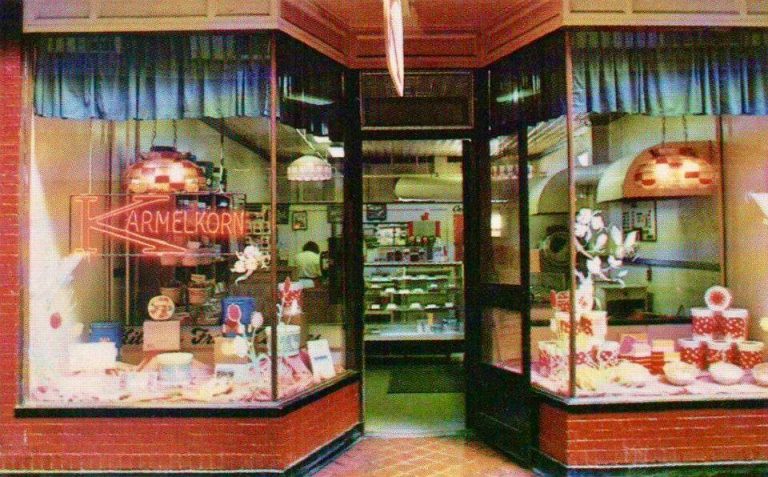
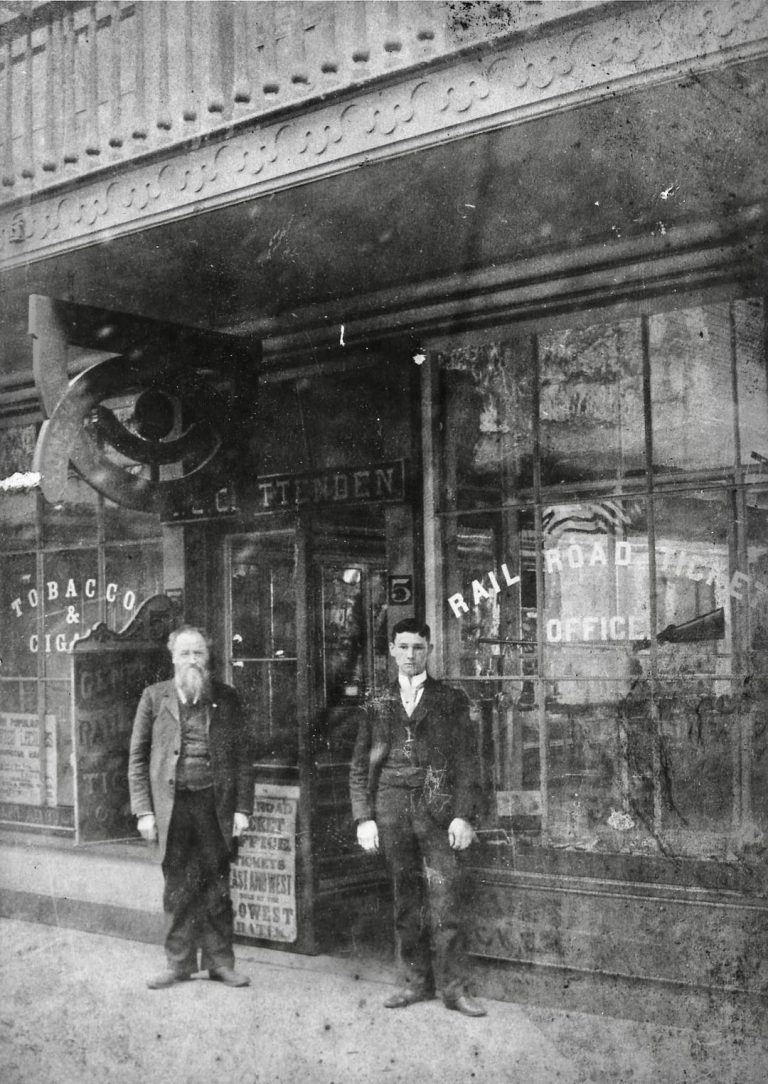
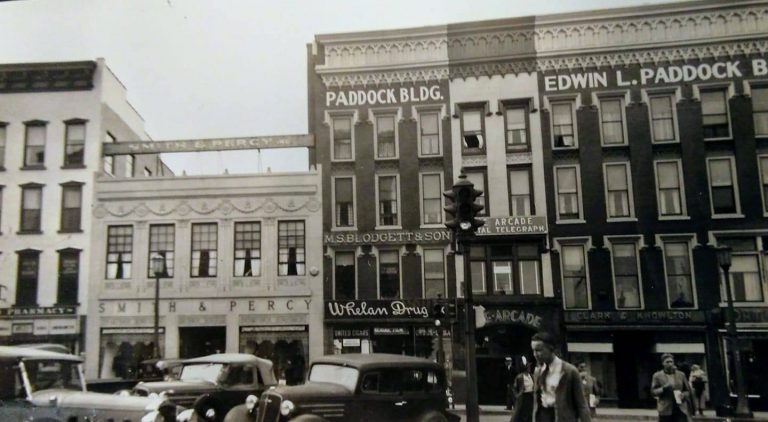


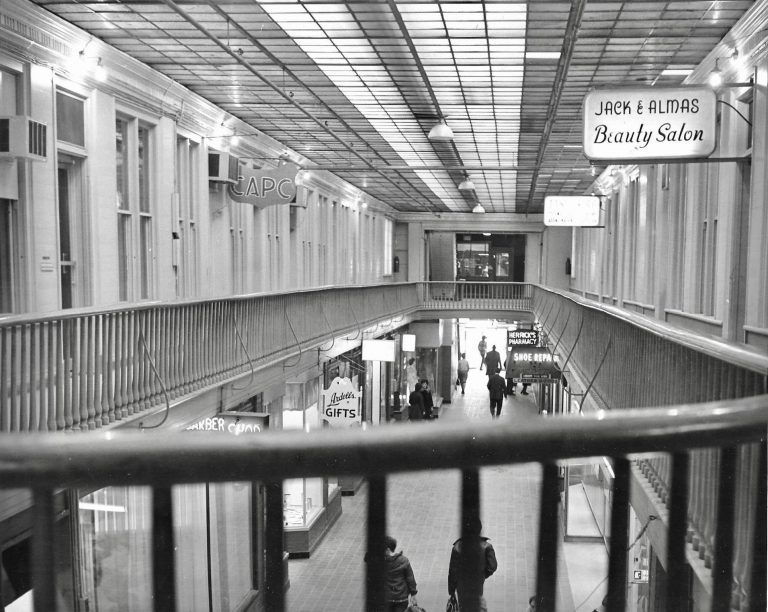



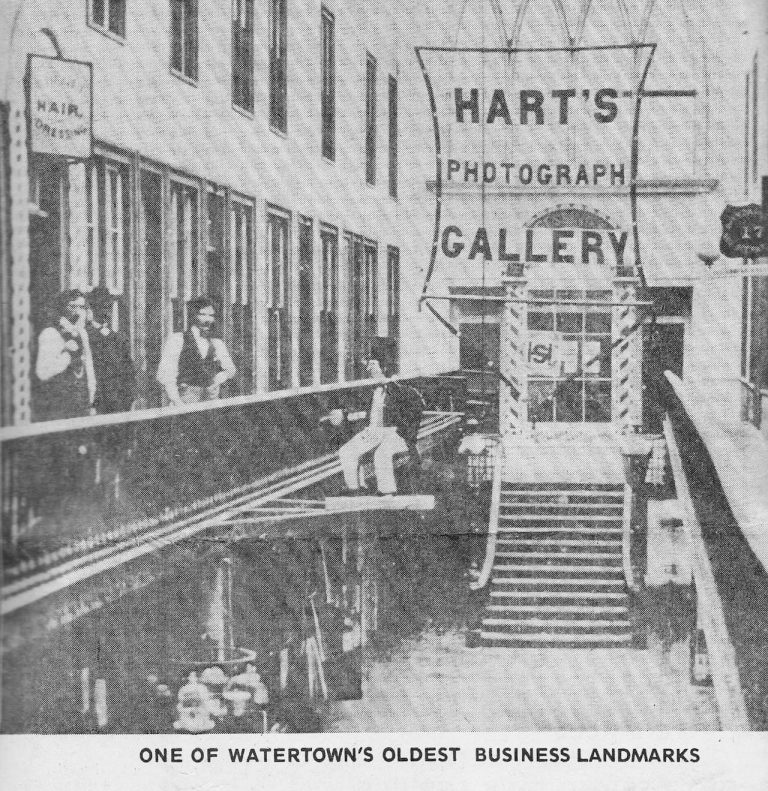
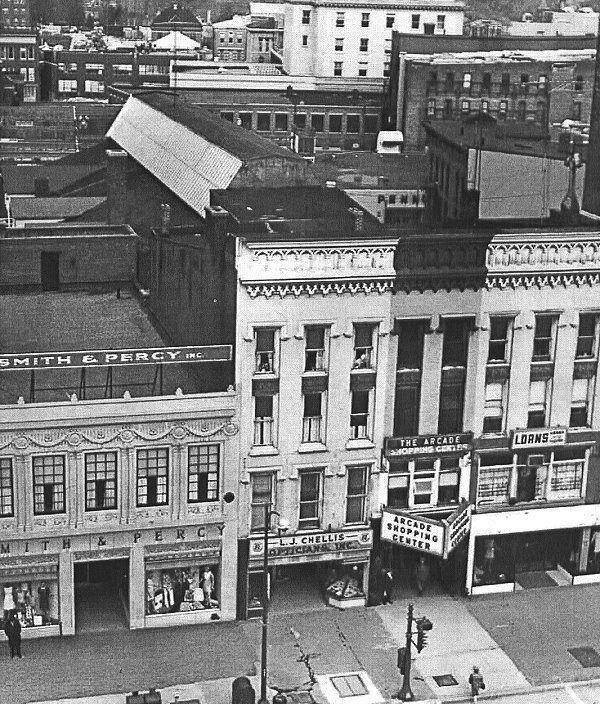
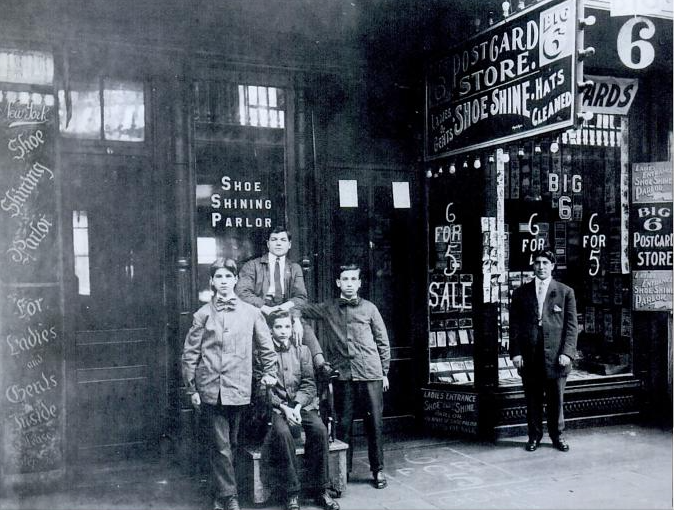
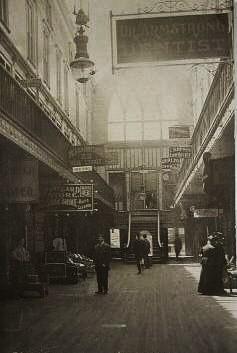

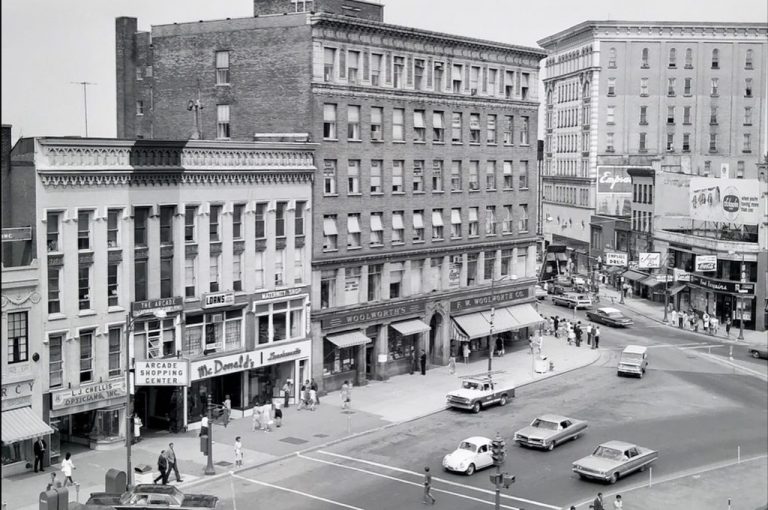
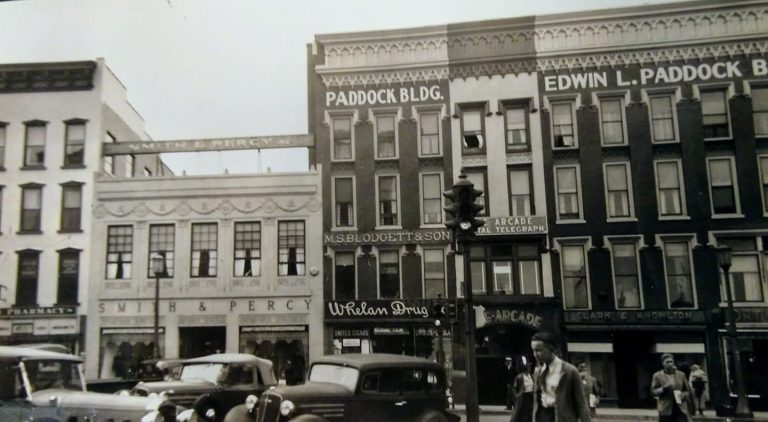


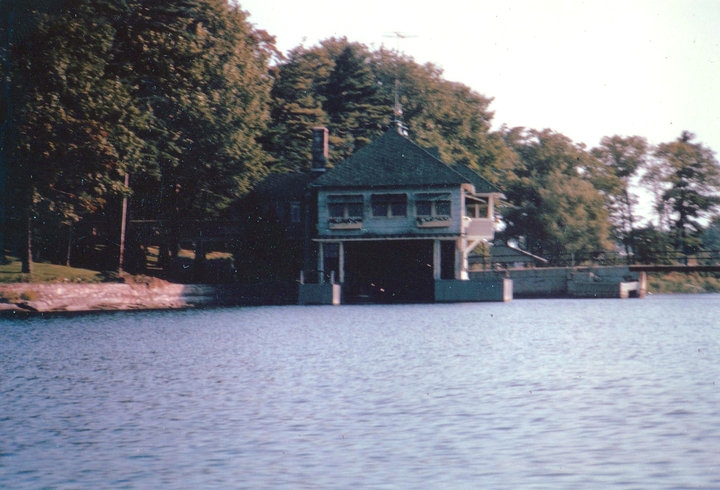
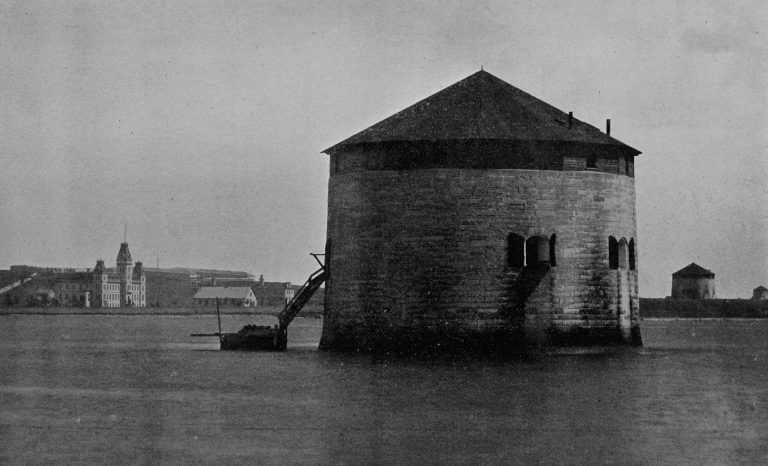
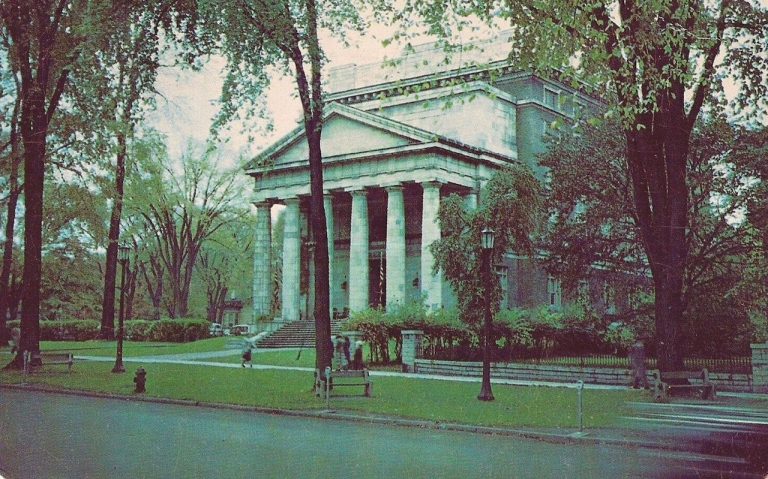

2 Reviews on “Paddock Arcade (1850 – Present)”
Loved reading this history of a well visited place!!!
I remember the KarmelKorn Shoppe and the wonderful pralines that melted into your mouth. The smells from that shop were heavenly. I grew up in the 60’s outside of Watertown and now reside in Salt Lake City. Cheryl Leonard